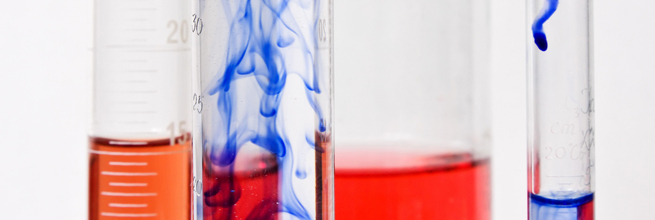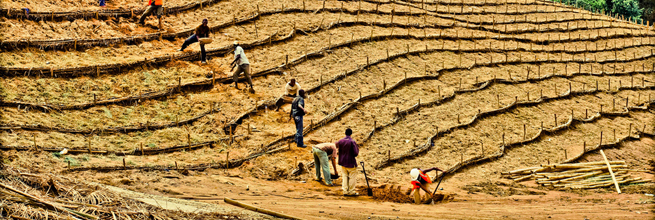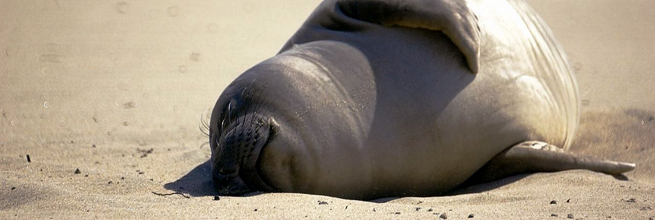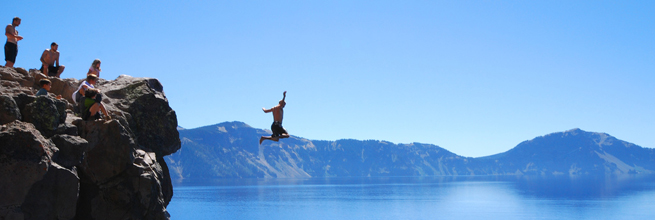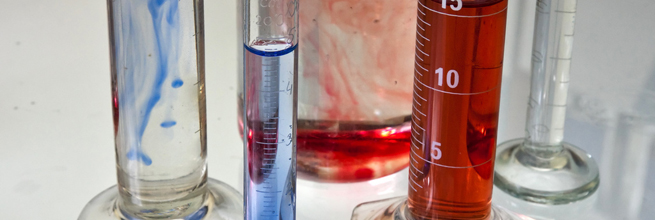Previously in this series: Learn to Share: A Primer | Part One: Setting the Stage | Part Two: Identifying Your Motives
Becoming a Catalyst
HYPOTHESIS The best way to balance our commodity-driven culture is to contribute to the community through the open exchange of knowledge, ideas and information.
What is a catalyst?
In science, a catalyst is an agent that increases the rate of a reaction between two or more compounds. But what's interesting (and in my opinion, essential for this comparison) is that despite participating in the reaction, the catalyst is not consumed by the reaction itself, so the compounds in the chemical change aren't reacting with the catalyst, they're reacting because of its presence.
Agents for Change
When I was just out of high school, my good friend John served as an agent of change for those around him. After being diagnosed with bone cancer that had already spread through vital parts of his body, John spent several years fighting tooth and nail for his survival. After a leg amputation, numerous bouts of radiation and chemotherapy and rigorous physical therapy, he bounced back, conquering the cancer and entering into full remission.
But despite the ordeal, his eternally positive attitude and inspirational enthusiasm lent him to being a catalyst for those around him. No matter who he met or how long he got to know someone, from his doctors and nurses to his close family and even casual acquaintances, he initiated a change in them for the better. He had the uncanny ability to put a smile on the most pessimistic of faces and give hope to the hopeless. He was a catalyst.
Around this same time, John introduced me to another catalyst (the more catalysts you meet, the more you'll realize they tend to stay connected with one another). At the time, Kevin Carroll worked at Nike under the title of Katalyst (the K is for Kevin). Kevin's sole responsibility around the Nike world headquarters was to be an agent for creative change.
He initiated campus-wide guerrilla games of tag, held employee soccer tournaments, introduced leading athletes to students and children with terminal illnesses for inspiration, told his inspirational Red Rubber Ball story and much, much more. He had no shortage of wacky, zany, crazy ideas intended solely on inspiring creativity and provoking thought. He was a catalyst.
Passion, Enthusiasm and Strengths
I mentioned passion in the last article as a driving force for your motives, but you can also lean on your passions to guide you into becoming a catalyst. What strengths can you contribute to the community that you are joining or creating? Every community has needs and no one is expected to give 100% of themselves 100% of the time. So what can you give? Where do your talents lie and how can you apply them to this situation to become an agent for change? Is there a part of you that's currently unused?
Skills and talents aside, the biggest part of ourselves that we can use to develop a reaction in a community is our enthusiasm. If you have a passion for something and let that shine through in your words and actions, you will motivate, encourage and ignite action in the people you serve or with whom you work.
One thing that Kevin Carroll embodies as a "Katalyst" is enthusiasm. No matter what he did or what he talked about, he was genuinely excited. He couldn't wait to tell you a story or initiate a new project or show you a new perspective. That enthusiasm is what drove people to play along and join in the fun. And that enthusiasm is what makes him so successful in being an agent for change among his community.
What strengths do you have that you can offer up to your community? When you excel at something, there's a certain level of confidence and positive attitude that shines through while you're doing it. It could be writing, it could be web design. It could be meeting people and building relationships, or it could be planning events. When you believe in a cause and devote a portion of your positive side to it, you can initiate a positive reaction for change (and not be consumed in the process).
Collaboration: Be a Team Player
I have a confession to make—I'm a control freak. What's worse, I only realized and accepted this over the course of the last year. Thanks to a wonderfully patient leadership council, I've learned that I can't try to do everything all on my own. It's exhausting, for one thing, but it's also not fair to the other community members who are also putting time and effort into building something that we're passionate about. I was not being a very good team player, and no matter how much energy and enthusiasm I put into the program, it cheated my fellow teammates out of the full benefits of sharing the load and working together.
There are a lot of buzz words floating around these days when it comes to working with a community. Collaboration, cross-pollination, synergy, team-building, social practice, community engagement—I could go on. But while I'll dive into some of these more deeply with the next part of this series, Creating Synergy, I have to highlight the importance of working as a team.
Chemical reactions must involve at least two compounds, and with an agent for change, that makes three. There's no I in three. Truly effective teamwork prevents burnout (a phenomenon that's all too common these days), fuels the team's fire and enocourages growth and success. Shared responsibility results in shared goals and shared pride. A catalyst initiates and encourages action without taking charge and consuming everything.
When it comes to team work, and especially when a a project is just getting off the ground, flexibility to shape and modify things as the community responds is essential. We must be open to change and evolution—communities are living, breathing entities, and we must live and breathe with them.
Encourage and Facilitate a Culture of Proactivity
Stop letting things come to you—go out and find them. Our culture has encouraged us over the years to become more and more lazy. Our smartphones notify us when we have a new email. We shop online instead of going to brick and mortar establishments. We like being waited on.
But all too often we find ourselves sitting around and waiting for opportunities to come knocking. It's time to retake matters into our own hands. If you want to start something, then start it. If you want to meet someone, then call them up and meet them. Putting yourself out there shows initiative, demonstrates your desire to participate and puts you on the right path to becoming a catalyst. You become the driving force that allows others to join in and make change.
Taking the Plunge
Did you know that I'm an introvert? Anyone who's ever met me might laugh and try to call my bluff, but the honest truth is that I would usually prefer to sit at home or spend time with my close friends than go out to a networking event and introduce myself to strangers. It gives me goosebumps right now just thinking about it. But while I may have a hard time putting myself out there, I understand its importance and my passions and commitment to programs like I Heart Art: Portland are what drag me out.
Other introverts like me are saying, "I'm too shy to just jump in."
I bet that your closest friends would tell you otherwise. I bet that they see in you a fiery go-getter when your passion leads the way. The trick is channeling that passion into enthusiasm and forward momentum. Once you take those first steps, the rest is easy. For me, it was as simple as attending a meet-up in 2009. I met people that inspired me. I found a community that wanted me to succeed at making my art. That little kernel of excitement started it all.
Still others might wonder, "Why do I need to be a catalyst? Can't I just be one of the other compounds in your silly chemistry analogy?"
The quick answer is yes. You can be just a compound in the reaction equation. But let's examine the long answer and first think back to why we're here: to connect to our community. We're trying to balance our commodity-driven culture with meaningful peer engagement for mutual benefit. We've set the stage and identified our motives, committing already to doing something different than most.
Then, when you take a look around, you'll start to realize that the world needs more catalysts. Like I said before, we have turned into a lazy people, and it's time to turn that ship around. We need catalysts to make us think, help us make, ignite our creativity, pull us together, unite us in a cause, teach us how to play, inspire us to change, empower us to succeed, and much, much more. You can be a catalyst.
When you succeed, a new world will open up before your eyes. The result of the reaction that a catalyst creates is greater than the sum of its parts. You will be surrounded by collaborations, inspiration and unity. You'll be able to solve issues in a community, offer resources to those without and forge new relationships. The benefit is mutual.
Agent, Environment, Reaction
Use your passion as your engine, your enthusiasm as your fuel and your community to steer the vehicle. Just like John or Kevin or any number of successful community catalysts, you can be an agent for change. Once you do, the next step is a big one—Developing Synergy.
To be continued… Part Four: Developing Synergy
Reblogged from I Heart Art: Portland. Originally posted on August 4, 2011.
